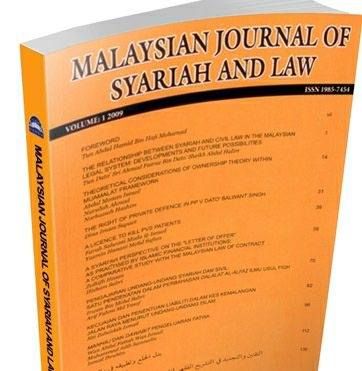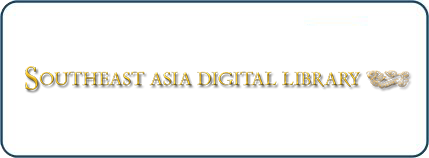MALAYSIAN OUTER SPACE LAW: THE WASATIYYAH APPROACH
DOI:
https://doi.org/10.33102/mjsl.vol6no2.142Keywords:
Outer space legislation, Malaysian outer space law, Maqasid Syariah, Wasatiyyah.Abstract
Wasatiyyah is not a mathematical moderation. It is a form of just evaluation that applies the Islamic conception of justice which asserts putting things in its proper places. Therefore, it should be defined and interpreted according to each circumstance surrounding the issues. With regards to the application of wasatiyyah in other field like outer space law, it requires analysis of the legal rules of outer space activities based on relevant elements of maqasid. This article highlights some legal rules proposed for Malaysia. It analyses each circumstances in determining whether the wasatiyyah approach is essential. The article applies the library research method including analysing the works of authoritative writers, as well as the United Nations international conventions on outer space. The findings demonstrate that the wasatiyyah approach is appropriate and proper to be applied in formulating and drafting Malaysian outer space law. It has been proven as well that it is capable of generating an excellent outcome of Malaysian space legislation.
Downloads
References
Outer Space Treaty 1967: Treaty on Principles Governing the Activities of States in the Exploration and Use of the Outer Space, Including the Moon and Other Celestial Bodies (1967) (Resolution 2222 (XXI)), adopted on 19 December 1966, opened to signature on 27 January 1967, entered into force on 10 October 1967. (1967) 610 UNTS 205, 18 UST 2410, TIAS 6347; (1967) 6 ILM 386; (1967) 61 AJIL 644.
Liability Convention 1972: Convention on International Liability for Damage Caused by Space Objects (1972) (Resolution 2777 (XXVI)), adopted on 29 November 1971, opened to signature on 29 March 1972, entered into force on 1 September 1972. 24 UST 2389, 961 UNTS 187, TIAS 7762.
Registration Convention 1975: Convention on Registration of Objects Launched into Outer Space (1974) (Resolution 3235 (XXIX)), adopted on 12 November 1974, opened to signature on 14 January 1975, entered into force on 15 September 1976. 28 UST 695, 1023 UNTS 15, TIAS 8480.
Books, Articles and Others:
Ahmad Sabirin Arshad. 1999. “Satellite Technology Potentials in Malaysia.†In International Conference on Information Technology, Kuala Lumpur. September 8-10. 1999. Vol.1. Paper 4.
Ahmad Sabirin Arshad. 2001. “TiungSAT-1 Technology Transfer Programme.†In TiungSAT-1, From Inception to Inauguration. Eds. Mazlan Othman and Ahmad Sabirin Arshad. Kuala Lumpur: Astronautic Technology (M) Sdn Bhd.
Amar Shah Mohsen. 2015. “Engineers Needed for RazakSat-2 Launching.†In The Sun Daily. 7 March 2015. http://www.thesundaily.my/news/1347850. Accessed: 1 July 2018.
Azriel, Merryl. 2012. “Spaceport to be built in Malacca.†In Space Safety Magazine. 10 May 2012. http://www.spacesafetymagazine.com/2012/05/10/spaceport-malaysia-built-malacca/. Accessed: 1 May 2018.
Che Zuhaida Saari. 2014. National Space Legislation: Future Perspectives for Malaysian Space Law. Leiden: International Institute of Air and Space Law, Leiden University.
Gamal Eldin Attia. 2010. Towards Realization of the Higher Intents of Islamic Law: Maqãásid al-SharÃî‘ah A Functional Approach (Translated from the Arabic by Nancy Roberts). Petaling Jaya: Islamic Book Trust.
Goh, Deyana. 2018. “Cubesats from Malaysia, Bhutan & the Philippines on SpaceX’s Dragon Launch.†In Spacetech. 29 June 2018. http://www.spacetechasia.com/cubesats-from-malaysia-bhutan-the-philippines-on-spacexs-dragon-launch/. Accessed: 29 June 2018.
Ismail Ibrahim. 2012. “Wasatiyyah Dari Perspektif Islam.†In Islam dan Wasatiyyah. Eds. Muhammad Mustaqim Mohd Zarif, Paimah Atoma and Hariza Mohd Yusof. Nilai: Penerbit USIM.
Martin Sweeting, Wei Sun and Mazlan Othman. 2001. “TiungSAT-1: Malaysia’s Microsatellite Programme.†In TiungSAT-1, From Inception to Inauguration. Eds. Mazlan Othman and Ahmad Sabirin Arshad. Kuala Lumpur: Astronautic Technology (M) Sdn Bhd.
Mazlan Othman and Ahmad Sabirin Arshad, eds. 2001. TiungSAT-1, From Inception to Inauguration. Kuala Lumpur: Astronautic Technology (M) Sdn Bhd.
Muhammad Mustaqim Mohd Zarif, Paimah Atoma and Hariza Mohd Yusof, eds. 2012. Islam dan Wasatiyyah. Nilai: Penerbit USIM.
Mustafa Din Subari and Azmi Hassan. 2015. “Creating a Vibrant Space Industry for Malaysia: The Need for a Space Act.†In Malaysian Journal of Remote Sensing and GIS. Vol.4. No.1.
Mustafa Din Subari. 2011. “Malaysia Space Related Activities 2011: Country Report.†http://www.aprsaf.org/annual_meetings/aprsaf18/pdf/program/day3/11_Malaysia%20Country%20Report.pdf. Accessed: 14 June 2018.
Norul Ridzuan Zakaria et al. 2007. “The Symbiotic Relationship between Astronaut Program and Space Tourism Development – A Third World Perspective.†2nd IAASS Conference. Chicago. 14 May 2007. In Space Future. http://www.spacefuture.com/archive/the_symbiotic_relationship_between_astronaut_program_and_space_tourism_development_a_third_world_perspective.shtml. Accessed: 1 May 2018.
Syed Muhammad Naquib Al-Attas. 2001. Prolegomena to the Metaphysics of Islam. Kuala Lumpur: ISTAC.
“Malaysia Astronaut Set to Launchâ€. 2007. In BBC News. 10 October 2007. http://news.bbc.co.uk/2/hi/asia-pacific/7036933.stm. Accessed: 1 May 2018.

Downloads
Published
How to Cite
Issue
Section
License
Copyright (c) 2018 Che Zuhaida Saari

This work is licensed under a Creative Commons Attribution-NonCommercial 4.0 International License.







































